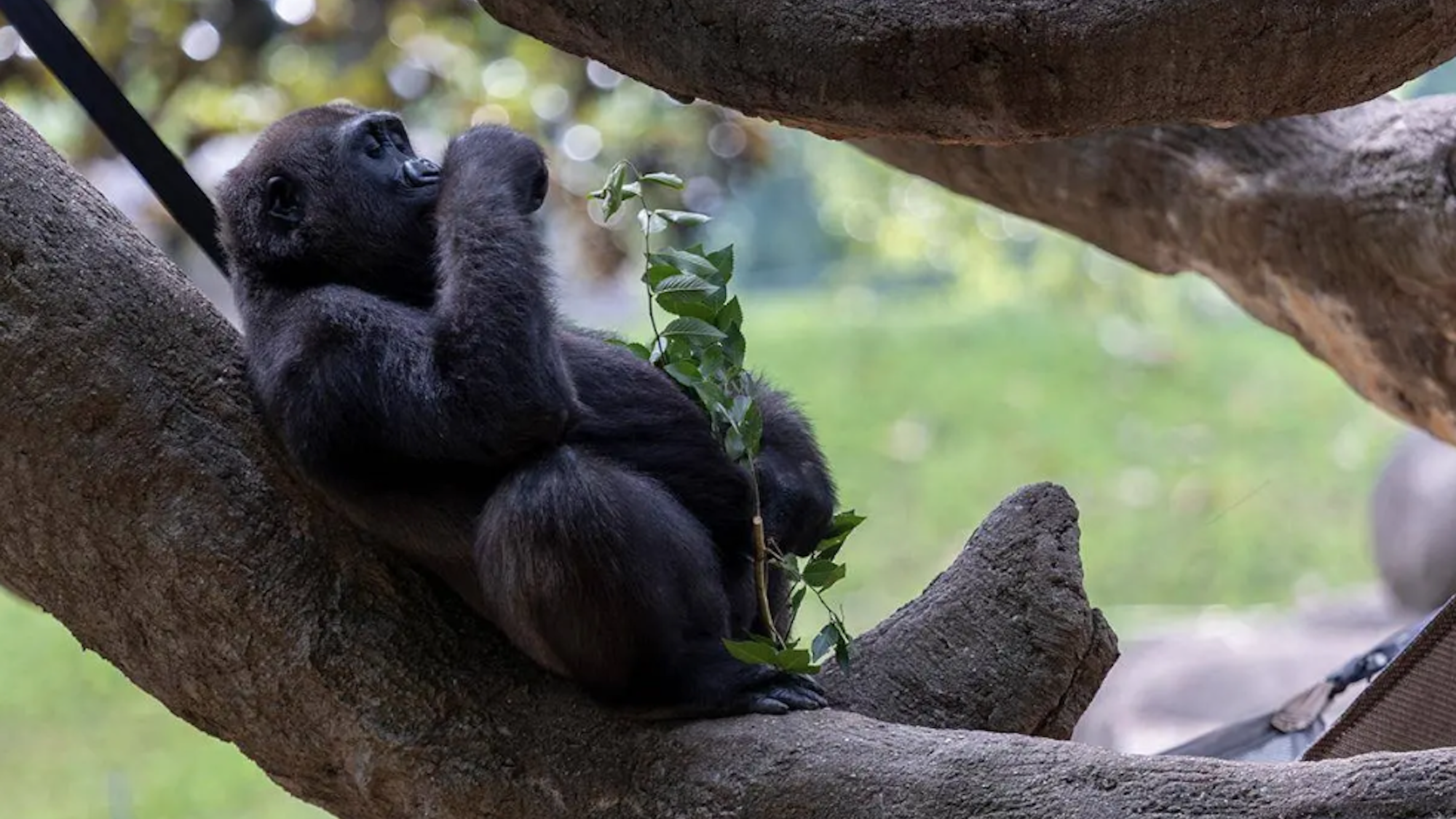

Apart from being naturally cliquey, gorillas are born foragers. In the wild, the great apes are regularly on the move in search of fruits, vegetables, and bamboo shoots; a habit that can become difficult to recreate when living within a zoo setting. At Zoo Atlanta, for example, human workers generally provided gorillas with their meals at certain scheduled times and locations. But an affordable new device could provide a much more naturalistic feeding regime for the apes—once they get used to it.
[Related: Gorillas can be cliquey, too. Here’s what that says about our own social lives.]
Recently, a team of mechanical engineering students and alumni at Georgia Tech began developing and testing ForageFeeder, a $400 machine partly inspired by deer feeders that can disperse gorillas’ their meals at random intervals and locations throughout the day. Suspended about 15 feet above the ground, ForageFeeder drops food such as carrots, sweet potatoes, and turnips from a bucket into a tray, after which time a rotor shoots the snacks in a circular motion as far as 30 feet away from the machine.
Recreating animals’ natural habitats and environments are crucial to ensuring zoo residents’ psychological and physical wellbeing, while also encouraging exercise and mental stimulation. Much like modern humans, zoo animals frequently deal with obesity due to a lack of activity. Tools and techniques such as the ForageFeeder not only promote Zoo Atlanta gorillas’ movement, but better simulate their natural foraging world.

Zookeepers at Zoo Atlanta have utilized the ForageFeeder on-and-off in their gorilla enclosure since last August. Although the primates are now largely used to its appearance, it wasn’t always the case. A video showcasing the gorillas’ first encounter with ForageFeeder depicts pretty much what one might expect—that is to say, some extremely befuddled apes. Over time, however, Zoo Atlanta’s residents have grown more used to the device.
“I’m confident we’re going to see statistical data that confirms what we’re already seeing: more foraging behavior,” Josh Meyerchick, senior keeper of primates at Zoo Atlanta and one of the research paper’s co-authors, said earlier this month.
[Related: Zoo animals are getting COVID vaccines made specially for them.]
That said, the team behind ForageFeeder aren’t waiting for gorillas to get with the program. Plans for the machine are currently open source online, and easily modifiable to adapt for countless other animal species’ diets, feeding times, and other particularities. ForageFeeder’s makers have already even modified their creation to serve Zoo Atlanta’s Angolan colobus monkey population.
“I find the zoo projects very interesting because your intended audience can’t provide any feedback,” says Magie Zhang, a project collaborator and recent mechanical engineering graduate. “If the device stops working, the animal doesn’t tell you. If they rip it apart, you can’t tell them to stop. It’s good to anticipate the problems of a design and figure out its solutions before it’s sent into the real world.”
